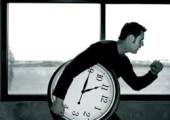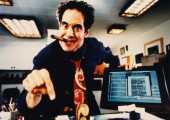With the long holiday break just behind us, and if anything we’re all busier than before the break we took to help us relax, I stopped to ponder the value of doing nothing. Some of my best ideas have occurred when I was doing “nothing”. My mind was obviously active, but the body can be fairly inert and immobile, heart rate low, BP down, etc. What makes most people relax is the lack of stress, both good stress and bad stress. Bad stress is presented when there is a challenge presented for which there is no good solution. Good stress is what drives competition, performance, internal drive in search of praise or approval. Bad stress can do physical damage, good stress can drive new levels of achievement. Relaxation can be as simple as having nothing on the schedule for the next hour that is “required” of us.
The conscious mind may be seemingly inert or inactive, but the subconscious portion is always churning, turning over the available data, mining the memory for connections, coincidences, angles and opportunities. Sometimes, driving the conscious thought pattern in a different direction can give the subconscious the room and resources to put more energy into solving the problem at hand. Not thinking about it can sometimes mean that you’re thinking harder about it, but in a different way, from a different direction.
Creative endeavors can benefit from this type of approach as well, not just problem solving behavior. When presented with a new marketing challenge, sometimes it’s best to just absorb and the necessary data and see what shape it takes naturally, rather than force it. I’ve worked with several graphic designers and production creatives, who had a policy of not touching a piece of paper(in those days) or a computer mouse to start the project until three days after the project “began”, the initial assignments had been made and some of the preliminary research had yielded some initial results. This gave them time to let the information “percolate” for a few days, giving their subconscious mind time to study the challenge from a variety of angles. I’ve found the designers who employ this technique to almost universally bring something fresh, appropriate, useful and accurate to the table – often they hit a home run the first time out, rather than through evolution involving outside input.
Doing nothing for some period gives us time to properly file the input presented during the day, assess it’s validity and value, maybe connect some of the pieces of data in a unique or different way. Many successful professionals swear by meditation for stress control and creative inspiration. Meditating forces you to stop everything else, calm yourself, clear your mind, focus on something amorphous or not relevant to the current challenge – precisely the same attributes as “doing nothing”. Maybe calling it meditation legitimizes doing nothing for workaholics? Whatever you call it, your mind needs time to rest, rejuvenate, recover from the daily assault of input from outside sources. Rest can be your sharpest tool for solving problems.
Let’s take a few moments out this weekend, and take a few extra hours to “Do nothing”. You might find a few problems solved or that things look a bit more clear when you “come back”.
If you found this valuable or interesting, more like it can be easily delivered to your inbox for free – just subscribe to this blog above. Also, be sure to pick up your copy of “The Marketing Doctor’s Survival Notes”





